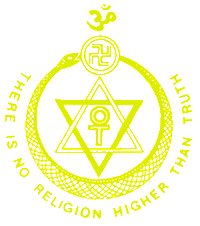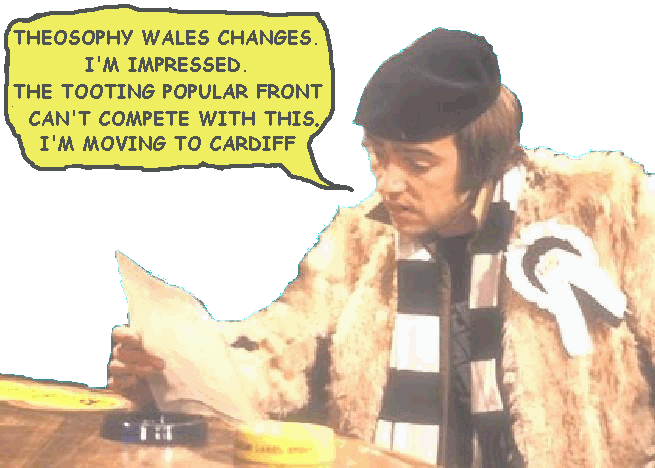HORNET
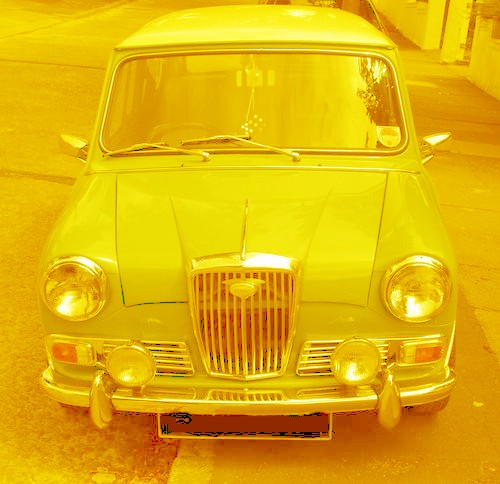
The
Wolseley Hornet 1960s model
An
upmarket version of the Mini
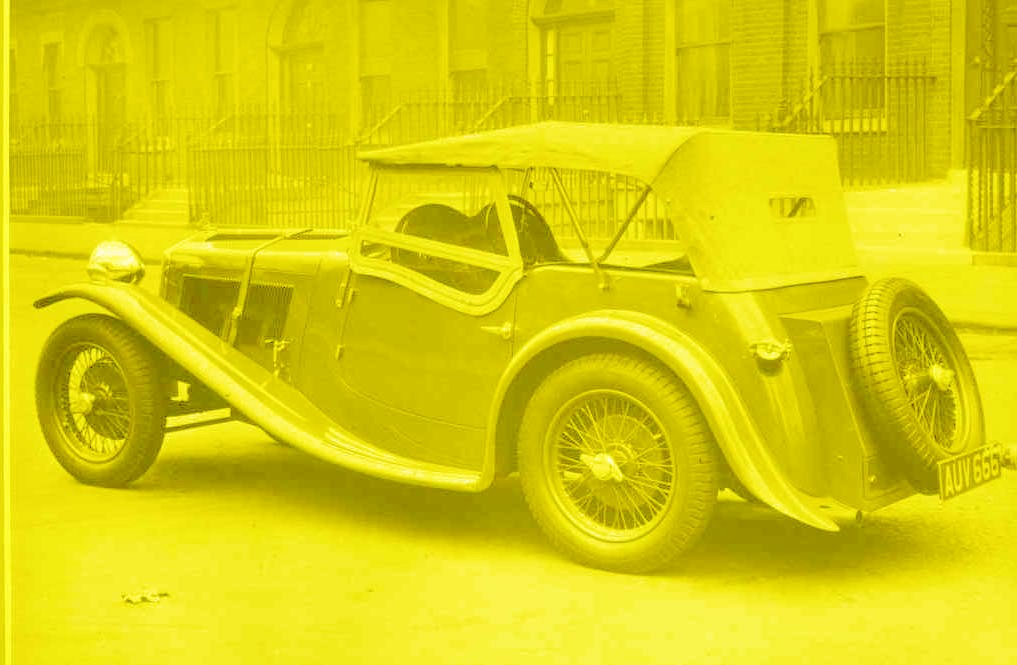
A
1930s Wolseley Hornet sports car
The
bodywork for these was made to order by a coachbuilder
of the customer’s choice and there were many
variations of this car.
The
series ran from 1930 to 1935
The Wolseley Hornet both in its 1930s sports
car
incarnation, and its 1960s posh mini version, has
very
little (in fact nothing) to do with Theosophy
but
we have found that Theosophists and new
enquirers
do like pictures of classic cars
and
we get a lot of positive feedback.
You can find Theosophy Wales groups
in
Bangor, Cardiff, Conwy
& Swansea
Theosophy Wales has no controlling
body
and is made up of
independent groups
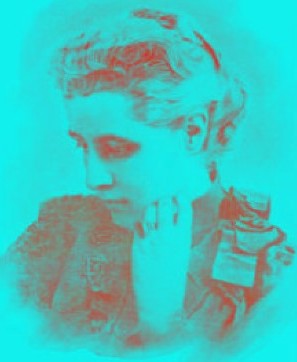
________________________
The
Ancient Wisdom
by
Annie
Besant
Man’s Ascent
So stupendous
is the ascent up which some men have climbed, and some are climbing, that when
we scan it by an effort of the imagination we are apt to recoil, wearied in
thought by the mere idea of that long journey. From the embryonic soul of the
lowest savage to the liberated and triumphant perfected spiritual soul of the
divine man – it seems scarcely credible that the one can
contain in it all that is expressed in the other, and
that the difference is but a difference in evolution, that one is only at the
beginning and the other at the end of man’s ascent.
Below the one
stretch the long ranks of the sub-human – the animals, vegetables, minerals,
elemental essences; above the other stretch the infinite gradations of the superhuman
– the Chohans, Manus, Buddhas, Builders, Lipikas; who
may name or number the hosts of the mighty Ones? Looked at thus, as a stage in
a yet vaster life, the many steps within the human kingdom shrink into a
narrower compass, and man’s ascent is seen as comprising but one grade in
evolution in the linked lives that stretch from the elemental essence onwards
to the manifested God.
We have
traced man’s ascent from the appearance of the embryonic soul to the state of
the spiritually advanced, through the stages of evolving consciousness from the
life of sensation to the life of thought. We have seen him retread the cycle of
birth and death in the three worlds, each world yielding him its harvest and
offering him opportunities for progress. We are now in a position to follow him
into the final stages of his human evolution, stages that lie in the future for
the vast bulk of our humanity, but that have already been trodden by its eldest
children, and that re being trodden by a slender number of men and women in our
own day.
These stages
have been classified under two headings – the first are spoken of as
constituting "the probationary Path," while the later ones are
included in "the Path proper" or " the Path of
discipleship." We will take them in their natural order.
As a man’s
intellectual, moral, and spiritual nature develops, he becomes more and more
conscious of the purpose of human life, and more and more eager to accomplish
that purpose in his own person. Repeated longings for earthly joys, followed by
full possession and by subsequent weariness, have gradually taught
him the
transient and unsatisfactory nature of earth’s best gifts; so often has he
striven for, gained, employed, been satiated, and finally nauseated, that he
turns away discontented from all that earth can offer. "What doth it
profit?" sighs the wearied soul: "All is
vanity and vexation. Hundreds, yea, thousands of
times have I possessed, and finally have found
disappointment even in possession."
"These
joys are illusions, as bubbles on a stream, fairy-coloured,
rainbow-hued, but bursting at a touch. I am athirst for realities; I have had
enough of shadows; I pant for the eternal and the true, for freedom from the
limitations that hem me in, that keep me prisoner amid these changing
shows."
This first
cry of the soul for liberation is the result of the realisation
that, were this earth all that poets have dreamed it, were every evil swept
away, every sorrow put an end to , every joy intensified, every beauty
enhanced, were everything raised to its point of perfection, he would still be aweary of it, would turn from it void of desire. It has
become to him a prison, and, let it be decorated as it may, he pants for the
free and limitless air beyond its inclosing walls.
Nor is heaven
more attractive to him than earth; of that too he is aweary;
its joys have lost their attractiveness, even its intellectual and emotional
delights no longer satisfy. They also "come and go, impermanent" like
the contacts of the senses; they are limited, transient, unsatisfying. He is
tired of the changing; from very weariness he cries out for liberty.
Sometimes
this realisation of the worthlessness of earth and
heaven is at first but a flash in consciousness, and the external worlds
reassert their empire and the glamour of their illusive joys again laps the
soul into content. Some lives even may pass, full of noble work and unselfish
achievement, of pure thoughts
and lofty deeds, ere this realisation
of the emptiness of all that is phenomenal becomes the permanent attitude of
the soul.
But sooner or
later the soul once and for ever breaks with earth and heaven as incompetent to
satisfy his needs, and this definite turning away from the transitory, this
definite will to reach the eternal, is the gateway to the probationary Path.
The soul steps off the highway of evolution to breast the steeper climb up the
mountain side, resolute to escape from the bondage of earthly and heavenly
lives, and to reach the freedom of the upper air.
The work
which has to be accomplished by the man who enters on the probationary Path is
entirely mental and moral; he has to bring himself up to the point at which he
will fit to "meet his Master face to face": but he very words
"his Master" need explanation. There are certain great Beings
belonging to our race who have completed Their human
evolution, and to whom allusion has already been made as constituting a
Brotherhood, and as guiding and forwarding the development of the race.
These Great
Ones, the Masters, voluntarily incarnate in human bodies on order to form the
connecting link between human and superhuman beings, and They permit those who fulfil certain conditions to become Their disciples, with
the object of hastening their evolution and thus qualifying themselves to enter
the great Brotherhood, and to assist in its glorious and beneficent work for
man.
The Masters
ever watch the race, and mark any who by the practice of virtue, by unselfish
labour for human good, by intellectual effort turned to the service of man, by
sincere devotion, piety, and purity, draw ahead of the mass of their fellows,
and render themselves capable of receiving spiritual assistance beyond that
shed down on mankind as a whole. If an individual is to receive special help he
must show special receptivity.
For the
Masters are the distributors of the spiritual energies that help on human
evolution, and the use of these for the swifter growth of a single soul is only
permitted when that soul shows a capacity for rapid progress and can thus be quickly
fitted to become a helper of the race, returning to it the aid that had been
afforded to himself. When a man, by his own efforts, utilising
to the full all the general help coming to him through religion and philosophy,
has struggled onwards to the front of the advancing human wave and when he
shows a loving, selfless, helpful nature, then he becomes a special object of
attention to the watchful Guardians of the race, and opportunities are put in
his way to test his strength and call forth his intuition.In
proportion as he successfully uses these, he is yet further helped, and
glimpses are afforded to him of the true life, until the unsatisfactory and
unreal nature of mundane existence presses more and more on the soul, with the
result already mentioned – the weariness which makes him long for freedom and
brings him to the gateway of the probationary Path.
His entrance
on his Path places him in the position of a disciple or chelâ,
on probation, and some one Master takes him under His care, recognising
him as a man who has stepped out of the highway of evolution, and seeks the
Teacher who shall guide his steps along the steep and narrow path which leads
to liberation.
That Teacher
is awaiting him at the very entrance of the Path, and even though the neophyte
knows not his Teacher, his Teacher knows him, sees his efforts, directs his
steps, leads him into the conditions that best subserve
his progress, watching over him with the tender solicitude of a mother, and
with the wisdom born of perfect insight. The road may seem lonely and dark, and
the young disciple may fancy himself deserted, but a "friend who sticketh closer than a brother" is ever at hand, and
the help withheld from the senses is given to the soul.
There are
four definite "qualifications" that the probationary chelâa must set himself to
acquire, that are by the wisdom of the great Brotherhood laid down as the
conditions of full discipleship. They are not asked for in perfection, but they
must be striven for and partially possessed ere Initiation is permitted.
The first of
these is the discrimination between the real and the unreal which has been
already dawning on the mind of the pupil, and which drew him to the Path on
which he is now entered; the distinctions grows clear and sharply defined in
his mind, and gradually frees him to a great extent from the fetters which bind
him, for the second qualification, indifference to external things, comes
naturally in the wake of discrimination, from the clear perception of their
worthlessness.
He learns
that the weariness which took all the savour out of
life was due to the disappointments constantly arising from his search for
satisfaction in the unreal, when only the real can content the soul; that all
forms are unreal and without stability, changing ever under the impulses of
life, and that nothing is real but the one Life that we seek for and love
unconsciously under its many veils. This discrimination is much stimulated by
the rapidly changing circumstances into which a disciple is generally thrown,
with the view of pressing on him strongly the instability of all external
things.
The lives of
a disciple are generally lives of storm and stress, in order that the qualities
which are normally evolved in a long succession of lives in the three worlds
may in him be forced into swift growth and quickly brought to perfection. As he
alternates rapidly from joy to sorrow, from peace to storm, from rest to toil,
he learns to see in the changes the unreal forms, and to feel through all a steady
unchanging life. He grows indifferent to the presence or the absence or the
absence of things that thus come and go, and more and more he fixes his gaze on
the changeless reality that is ever present.
While he is
thus gaining in insight and stability he works also at the development of the
third qualification – the six mental attributes that are demanded from him ere
he may enter on the Path itself. He need not possess them all perfectly, but he
must have them all partially present at least ere he will be permitted to pass
onward.
First he must
gain control over his thoughts, the progeny of the restless, unruly mind, hard
to curb as the wind. (Bhagavad Gitâ, vi. 34). Steady,
daily practice in meditation, in concentration, had begun to reduce this mental
rebel to order ere he entered on the probationary Path, and the disciple now
works with concentrated energy to complete the task, knowing that the great
increase in thought power that will accompany his rapid growth will prove a
danger both to others and to himself unless the developing force be thoroughly
under his control.
Better give a
child dynamite as a plaything, than place the creative powers of thought in the
hands of the selfish and ambitious. Secondly, the young chela
must add outward self-control to inner, and must rule his speech and his
actions as rigidly as he rules his thoughts. As the mind obeys the soul, so
must the lower nature obey the mind. The usefulness of
the disciple in the outer world depends as much on the pure and noble example
set by his visible life, as his usefulness in the inner world depends on the
steadiness and strength of his thoughts.
Often is a
good work marred by carelessness in this lower part of human activity, and the
aspirant is bidden strive towards an ideal perfect in every part, in order that
he may not later, when treading the Path, stumble in his own walk and cause the
enemy to blaspheme.
As already
said, perfection in anything is not demanded at this stage, but the wise pupil
strives towards perfection, knowing that at his best he is still far away from
his ideal.
Thirdly, the
candidate for full discipleship seeks to build into himself the sublime and
far-reaching virtue of tolerance – the quiet acceptance of each man, each form
of existence, as it is, without demand that it should be something other shaped
more to his own liking. Beginning to realise that the
one Life
takes on
countless limitations, each right in its own place and times, he accepts each
limited expression of that Life without wishing to transform it into something
else; he learns to revere the wisdom which planned this world and which guides
it, and to view with wide-eyed serenity the imperfect parts as they slowly work
out their partial lives.
The drunkard,
learning his alphabet of the suffering caused by the dominance of the lower
nature, is doing as usefully in his own stage as is the saint in his,
completing his last lesson in earth’s school, and no more can justly be
demanded from either than he is able to perform. One is in the kindergarten
stage, learning by object-lessons, while the other is graduating, ready to
leave his
university; both are right for their age and their place,
and should be helped and sympathised with in their
place.
This is one of
the lessons of what is known in occultism as "tolerance." Fourthly
must be developed endurance, the endurance that cheerfully bears all and
resents nothing, going straight onwards unswervingly to the goal. Nothing
can come to him but by the Law, and he knows the Law
is good. He understands that the rocky pathway that leads up the mountain-side
straight to the summit cannot be as easy to his feet as the well-beaten winding
highway.
He realises that he is paying in a few short lives all the
karmic obligations accumulated during his past, and that the payments must be
correspondingly heavy. The very struggle into which he is plunged develop in
him the fifth attribute, faith – faith in his Master and in himself, a serene
strong confidence that is unshakeable. He learns to trust in the wisdom, the
love, the power of his Master, and he is beginning to realise
– not only to say he believes in – the Divinity within his own heart, able to
subdue all things to Himself. The last mental requisite, balance, equilibrium,
grows up to some extent without conscious effort during the striving after the
preceding five.
The very
setting of the will to tread the Path is a sign that the higher nature is
opening out, and that the external world is definitely relegated to a lower
place. The continuous efforts to lead the life of discipleship disentangle the
soul from any remaining ties that may knit it to the world of sense, for the
withdrawal of the soul’s attention from lower objects
gradually exhausts the attractive power of those objects. They "turn away
from an abstemious dweller in the body," ( Bhagavad
Gitâ, ii, 59.) and soon lose all power to disturb
this balance. Thus he learns to move amid them undisturbed, neither seeking nor
rejecting any. He also learns to balance amid mental
troubles of every kind, amid alternations of mental joy and mental pain, this
balance being further taught by the swift changes already spoken of through
which his life is guided by the ever-watchful care of his Master.
These six
mental attributes being in some measure attained, the probationary chelâa needs further but the fourth qualification, the deep
intense longing for liberation, that yearning of the soul towards union with
deity that is the promise of its own fulfillment. This adds the last touch to
his readiness to
enter into
full discipleship, for, once that longing has definitely asserted itself, it
can never again be eradicated, and the soul that has felt it can never again
quench his thirst at earthly fountains; their waters will ever taste flat and
vapid when he sips them, so that he will turn away with ever-deepening longing
for the true water of life.
At this stage
he is "the man ready for Initiation," ready to definitely "enter
the stream" that cuts him off forever from the interests of earthly life
save as he can serve his Master in them and help forward the evolution of the
race.
Henceforth
his life is not to be the life of separateness; it is to be offered up on the
altar of humanity, a glad sacrifice of all he is, to be used for the common
good.
The student
will be glad to have the technical names of these stages in Sanskrit and Pâli, so that he may be able to follow them out in more
advanced books: SANSKRIT (used by Hindus) PALI (used by Buddhists)
1 VIVEKA
discrimination between the
real and the unreal 1 MANODVÂRAVAJJANA the opening of the doors of the mind; a
conviction of the impermanence of the earthly
2 VAIRÂGYA
indifference to the unreal, the transitory 2 PARIKAMMA preparation for action;
indifference to the fruits of action
3
SHATSAMPATTI SHAMA control of thought 3 UPACHÂRO attention or conduct; divided
under the same headings as in the Hindu
DAMA control
of conduct
UPARATI
tolerance
TITIKSHA
endurance
SHRADDHA
faith
SANADDGBA
balance
4 MUMUKSHA
desire for liberation 4 ANULOMA direct order or succession, its attainment
following on the other three.
The man is
then the ADHIKARI The man is then the GATRABHU During the years spent in
evolving the four qualifications, the probationary chelâa
will have been advancing in many other respects. He will have been receiving
from his Master much teaching, teaching usually imparted during the
deep sleep of
the body; the soul, clad in the well-organised astral
body, will have become used to it as a vehicle of consciousness, and will have
been drawn to his Master – to receive instruction and spiritual illumination.
He will
further have been trained in meditation, and this effective practice outside
the physical body will have quickened and brought into active exercise many of
the higher powers; during such meditation he will have reached higher regions
of being, learning more of the life of the mental plane. He will have
been taught
to use his increasing powers in human service, and during many of the hours of
sleep for the body he will have been working diligently on the astral plane,
aiding the souls that have passed on to it by death, comforting the victims of
accidents, teaching any less instructed than himself, and in countless ways
helping those who needed it, thus in humble fashion aiding the
beneficent work of the Masters, and being associated with
Their sublime Brotherhood as a co-labourer in a
however modest and lowly degree.
Either on the
probationary Path or later, the chelâa is offered the
privilege of performing one of those acts of renunciation which mark the
swifter ascent of man. He is allowed "to renounce Devachan," that is,
to resign the glorious life
in the
heavenly places that awaits him on his liberation from the physical world, the
life which in his case would mostly be spent in the middle arupa
world in the company of the Masters, and in all the sublime joys of the purest
wisdom and love. If he renounce this fruit of his
noble and devoted life, the spiritual forces that would have been expended in
his Devachan
are set free for the general service of the world, and he himself remains in
the astral region to await a speedy rebirth upon earth.
His Master in
this case selects and presides over his reincarnation, guiding him to take
birth amid conditions conducive to his usefulness in the world, suitable for
his further progress and for the work required at his hands. He has reached
the stage at which every individual interest is
subordinated to the divine work, and in which his will is fixed to serve in
whatever way may be required of him.
He therefore,
gladly surrenders himself into the hands he trusts, accepting willingly and
joyfully the place in the world in which he can best render service, and
perform his share of the glorious work of aiding the evolution of humanity.
Blessed is
the family into which a child is born tenanted by such a soul, a soul that
brings with him the benediction of the Master and is ever watched and guided,
every possible assistance being given him to bring his lower vehicles quickly
under control. Occasionally, but rarely a chelâ may
reincarnate in a body that has passed through infancy and extreme youth as the
tabernacle of a less progressed Ego; when an Ego comes to the earth for a very
brief life-period, say for some fifteen or twenty years, he will be leaving his
body at the time of dawning manhood, when it has passed through the time of early
training and is rapidly becoming an effective vehicle for the soul.
If such a
body be a very good one, and some chelâ be awaiting a
suitable reincarnation, it will often be watched during its tenancy by the Ego
for whom it was originally built, with the view of utilising
it when he has done with it; when the life-period of that Ego is completed, and
he passes out of the body into Kamaloka on his way to Devachan, his cast-off
body will be taken possession of by the waiting chelâ,
a new tenant will enter the deserted house, and the apparently dead body will
revive. Such cases are unusual, but are not unknown to occultists, and some
references to them may be found in occult books.
Whether the incarnation
be normal or abnormal, the progress of the soul, of
the chelâ himself, continues, and the period already
spoken of is reached when he is "ready for Initiation"; through that
gateway of Initiation he enters, as a definitely accepted chelâ,
on the Path. This Path consists of four distinct stages, and the entrance into
each is guarded by an Initiation. Each Initiation is accompanied by an
expansion of consciousness which gives what is called "the key to
knowledge" belonging to the stage to which it admits, and this key of
knowledge is also a key of power, for truly is knowledge power in all the
realms
of Nature.
When the chelâ has entered the Path he becomes what has been called
"the houseless man," (The Hindus call this stage that of Parivrajaka, the wanderer; the Buddhist calls it that of Srotapatti, he who has reached the stream. The chelâ is thus designated after his first Initiation and
before his second.) for
he longer looks on earth s this home – he has no
abiding-place here, to him all places are welcome wherein he can serve his
Master.
While he is
on this stage of the Path there are three hindrances to progress, technically
called "fetters," which he has to get rid of, and now – as he is
rapidly to perfect himself – it is demanded from him that he shall entirely
eradicate faults of character, and perform completely the tasks belonging to
his condition. The three fetters that he must loose from his limbs ere he can
pass
the second Initiation are: the illusion of the
personal self, doubt, and superstition. The personal self must be felt in
consciousness as an illusion, and must lose forever its power to impose itself
on the soul as a reality.
He must feel
himself one with all, all must live and breathe in him and he in all. Doubt
must be destroyed, but by knowledge, not by crushing out; he must know
reincarnation and karma and the existence of the Masters as facts; not
accepting them as intellectually necessary, but knowing them as facts in Nature
that he has himself verified, so that no doubt on
these heads can ever again rise in his mind.
Superstition
is escaped as the man rises into a knowledge of
realities, and of the proper place of rites and ceremonies in the company of
Nature; he learns to use every means and to be bound by none. When the chelâ has cast off these fetters – sometimes the task
occupies several lives, sometimes it is achieved in part of a single life – he
finds the second Initiation open to him, with its new "key of
knowledge" and its widened horizon. The chelâ
now sees before him a swiftly shortening span of compulsory life on earth, for
when he has reached this stage he must pass through his third and fourth
Initiations in his present life or in the next. (The chelâ
on the second stage of the path is for the Hindu the Kutichaka,
the man who builds a hut; he has reached a place of peace. For the Buddhist he
is the Sakridagamin, the man who receives birth but
once more.)
In this stage
he has to bring into full working order the inner faculties, those belonging to
the subtle bodies, for he needs them for his service in the higher realms of
being. If he has developed them previously, this stage may be a very brief one,
but he may pass through the gateway of death once more ere he is ready to
receive his third Initiation, to become "the Swan," the individual
who soars into the empyrean, that wondrous Bird of Life whereof so many legends
are related. ( The Hindu calls him the Paramahamsa, beyond the " I "; the Buddhist names
him the Arhat, the worthy.)
On this third
stage of the Path the chelâ casts off the fourth and
fifth fetters, those of desire and aversion; he sees the One
self in all, and the outer veil can no longer blind him, whether it be fair or
foul. He looks on all with an equal eye; that fair bud of tolerance that he
cherished on the probationary Path now flowers out into an all-embracing love
that wraps everything within its tender embrace. He is
"the friend of every creature," the
"lover of all that lives" in a world where all things
live.
As a living embodiment
of divine love, he passes swiftly onwards to the fourth Initiation, that admits
him to the last stage of the Path, where he is "beyond the
Individual," the worthy , the venerable. ( The Hamsa, he who realises "I am THAT," in the Hindu terms; the Anagamin, the man who receives birth no more, in the
Buddhist.)Here he remains at his will, casting off the last fine fetters that
still bind him with threads however fragile, and keep him back from liberation.
He throws off all clinging to life in form, and then all longing for formless
life; these are the chains and he must be chainless; he may move through the
three worlds, but not a shred of theirs must have power to hold him;
the splendours of the
"formless world" must charm him no more than the concrete glories of
the worlds of form.
Then –
mightiest of all achievements – he casts off the last fetter ofseparateness, the "I "ever making faculty –(Ahamkara, generally given as Mana, pride, since pride is the subtlest manifestation on
the "I" as distinct from others.) – which realises itself as apart from others, for he dwells on the
plane of unity in his waking consciousness, on the buddhic plane where the Self of all is known and realised as one. This faculty was born with the soul, is
the essence of individuality, and it persists till all that is valuable in it
is worked into the Monad, and it can be dropped on the threshold of liberation,
leaving its priceless result to the Monad, that sense of individual identity
which is so pure and fine that it does not mar the
consciousness of oneness.
Easily then
drops away anything that could respond to ruffling contacts, and the chelâ stands robed in that glorious vesture of unchanging
peace that naught can mar. And the casting away of that same
"I-making" faculty has cleared away from the spiritual vision the
last clouds that could dim its piercing insight, and in the realisation
of unity, ignorance – (Avidya, the first illusion and
the last, that which makes the separated worlds – the first of the Nidanas – and that which drops off when liberation is
attained.) – the limitation that gives birth to all
separateness – falls away, and the man is perfect, is free.
Then has come
the ending of the Path, and the ending of the Path is the threshold to Nirvana. Into that
marvellous state of consciousness the chelâ has been
wont to pass out of the body while he has been traversing the final stage of
the Path; now, when he crosses the threshold, the nirvanic
consciousness becomes his normal consciousness, for Nirvana is the home of the
liberated Self.
(The Jivanmukta, the liberated life, of the Hindu; the Asekha, he who has no more to learn, of the Buddhist.) He has completed man’s ascent, he touches the
limit of humanity; above him there stretch hosts of mighty Beings, but they are
superhuman; the crucifixion in flesh is over, the hour of liberation has
struck,
and the triumphant "It is finished!" rings
from the conqueror’s lips. See! – he has crossed the
threshold, he has vanished into the light nirvanic,
another son of earth has conquered death.
What
mysteries are veiled by that light supernal we know not; dimly we feel that the
Supreme Self is found, that lover and Beloved are one.
The long search is over, the thirst of the heart is quenched forever, he has entered into the joy of his Lord.
But has earth
lost her child, is humanity bereft of her triumphant son? Nay! He has come
forth from the bosom of the light, and He standeth
again on the threshold of Nirvana,
Himself seeming the very embodiment of that light, glorious beyond all telling,
a manifested Son of God. But now His face is turned to earth, His eyes beam
with divinest compassion on the wandering sons of
men, His brethren after the flesh; He cannot leave them comfortless, scattered
as sheep without a shepherd. Clothed in the majesty of a mighty renunciation,
glorious with the strength of perfect wisdom and "power of an endless
life," He returns to earth to bless and guide humanity, Master of Wisdom,
kingly Teacher, divine
Returning
thus to earth, the Master devotes Himself to the service of humanity with
mightier forces at His command than He wielded while He trod the Path of
discipleship; He has dedicated Himself to the helping of man, and He bends all
the sublime powers that He holds to the quickening
of the evolution of the world. He pays to those who are approaching the Path
the debt He contracted in the days of His own chelaship,
guiding, helping, teaching them as He was guided,
helped, and taught before.
Such are the
stages of man’s ascent, from the lowest savagery to the divine manhood. To such
goal is humanity climbing, to such glory shall the race attain.
_____________________________________
Annie Besant Visits Cardiff 1924
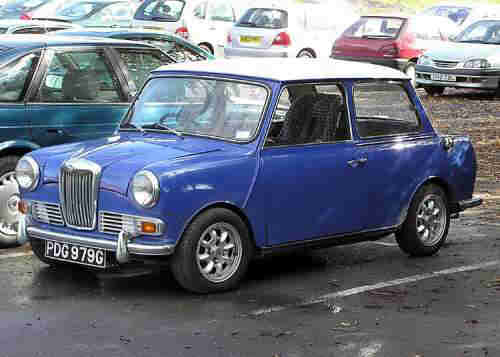
A
“G” reg Aug 1968 – July 1969 Wolseley Hornet MK III
The
1960s Wolseley Hornet was produced by the British Motor Corporation
(BMC)
from 1961 to 1969 and was upgraded thro’ MKI, II & III models
although the outward design remained the same.
The
Wolseley Hornet was similar to the more expensive Riley Elf which ran
for the same period with only the Riley grill
and badge to distinguish
it to the casual observer.
_____________________________
More Theosophy Stuff
with these links
Cardiff Theosophical
Society meetings are informal
and there’s always a cup of tea afterwards
The
Cardiff Theosophical Society Website
The
National Wales Theosophy Website
Bangor,
Cardiff, Conwy & Swansea
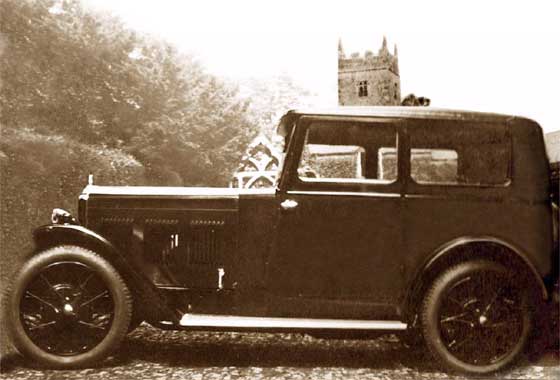
A
1931 Wolseley Hornet saloon style convertible
The Wolseley Hornet was a
lightweight saloon car produced by the Wolseley Motor Company from 1930 to
1935.
It had a six cylinder (1271cc) engine with a single overhead cam, and
hydraulic brakes. The engine was modified in 1932 to make it shorter and it was
moved forwards on the chassis. In 1935 the engine size was increased to
1378 cc.
Wolseley supplied the firsts cars as either an enclosed saloon with steel
or fabric body or open two seater. From 1931 it was available without the
saloon body, and was used as the basis for a number of sporting specials for
which the customer could choose a styling from a range of coachbuilders. In
1932 Wolsley added two and four seat coupés to the range. For its final year of
production the range was rationalised to a standard saloon and coupé.
A three speed gearbox was fitted to the earliest cars but this was upgraded
to a four speed in 1932 and fitted with synchromesh from 1933. A freewheel
mechanism could be ordered in 1934.The engine was also used in a range of MG
cars.
If you
run a Theosophy Group, please feel free
to use any of the
material on this site
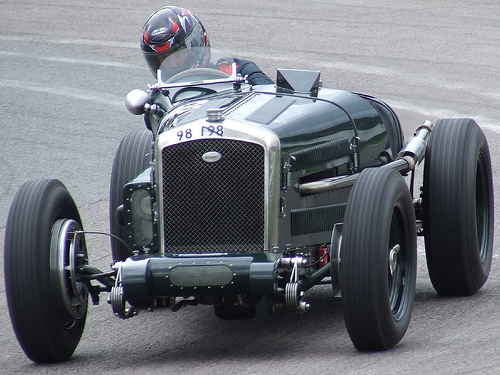
1930s
Wolseley Hornet racing car circuiting the track in modern times
The Most Basic Theosophy
Website in the Universe
A quick overview of Theosophy
and the Theosophical Society
If you run a Theosophy Group you
can use this as an introductory handout.
Theosophy Cardiff’s Instant Guide
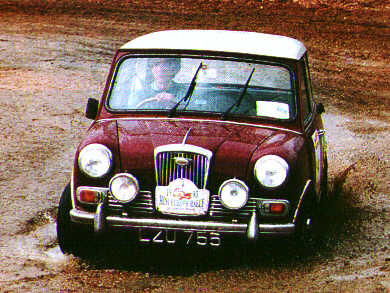
Wolseley
Hornet on a rally circa 1963
Theosophical Movement in Wales
as
it separates into independent
groups that run do their own show
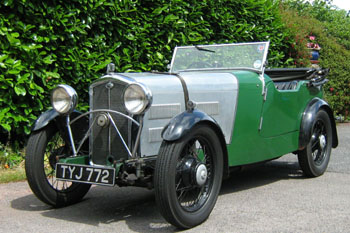
Early
1930s Wolseley Hornet customized roadster design
Basic front mudguards not extending to runner boards.
Only
the driver gets a windscreen wiper
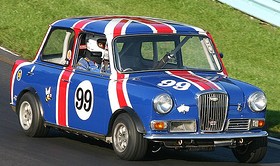
Patriotic
Wolseley Hornet on the race track in 1965
One liners and quick explanations
H P
Blavatsky is usually the only
Theosophist
that most people have ever
heard of. Let’s put
that right
The Voice of the Silence Website
An
Independent Theosophical Republic
Links
to Free Online Theosophy
Study
Resources; Courses, Writings,
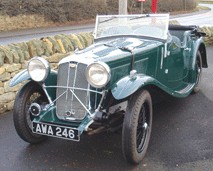
Early
1930s Customized Wolseley Hornet with integrated front mudguards
and runner boards. Two
windscreen wipers on this one.
The main criteria for the inclusion of
links on this site is that they have some
relationship (however tenuous) to Theosophy
and are lightweight, amusing or entertaining.
Topics include Quantum Theory and Socks,
Dick Dastardly and Legendary Blues Singers.
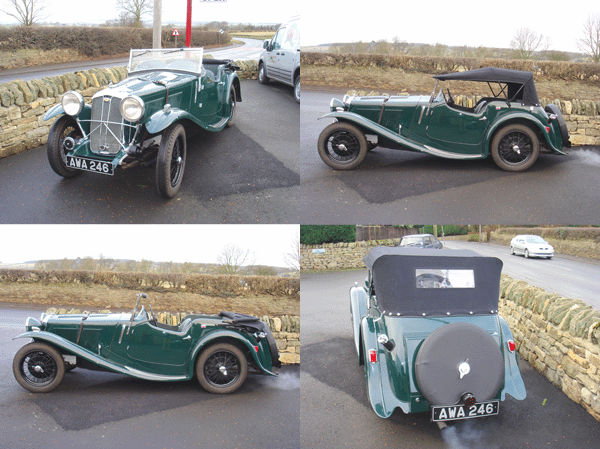
Four
views of the car in the picture above
A selection of articles on Reincarnation
Provided in response to the large
number of enquiries we receive at
Cardiff Theosophical Society on this subject
The Voice of the Silence Website
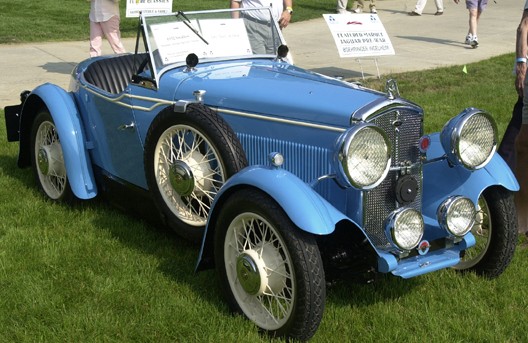
Swallow Wolseley Hornet 1932

A
leaflet promoting the new hydrolastic suspension
introduced in the mid sixties.
This
became standard on many BMC models including the Mini, 1100, 1300
& 1800 models. Suspension was maintained by
means of a sealed fluid system
which was claimed to be very comfortable but
appeared to make some people
seasick in the larger cars. As the cars got older,
the suspension might burst
causing the car’s suspension to collapse on one
side meaning a difficult
drive home or to a garage.
This is for
everyone, you don’t have to live
in Wales to make
good use of this Website
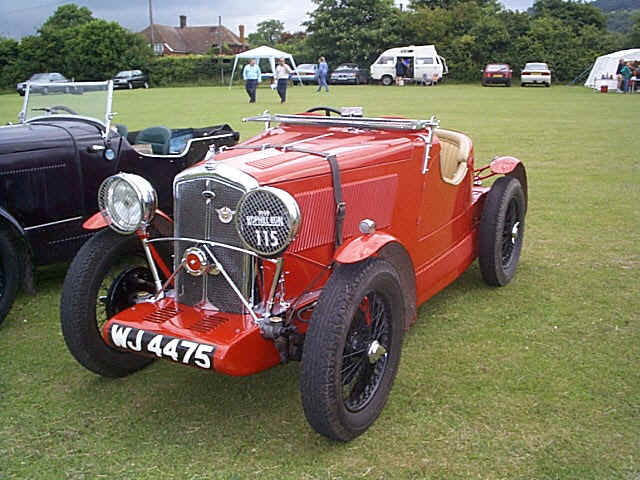
1930s
No
Aardvarks were harmed in the
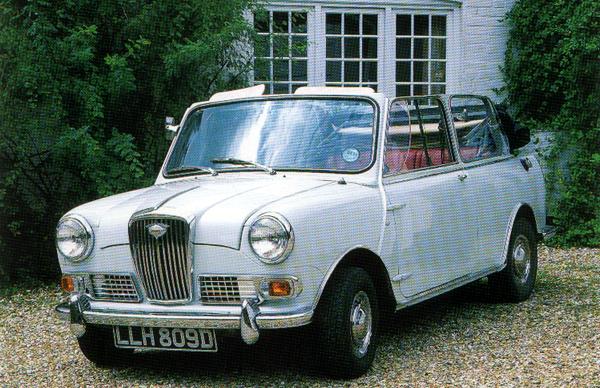
A 1966 Wolseley Hornet
convertible by Crayford Engineering
Convertible 1960s Hornets
were not standard and were very rare as
were
all convertibles in the Mini range.
Crayford
did a run of 57 Hornet convertibles for Heinz to be given
as
prizes in a competition
Within the British Isles, The
Adyar Theosophical Society has Groups in;
Bangor*Basingstoke*Billericay*Birmingham*Blackburn*Bolton*Bournemouth
Bradford*Bristol*Camberley*Cardiff*Chester*Conwy*Coventry*Dundee*Edinburgh
Folkstone*Glasgow*Grimsby*Inverness*Isle
of Man*Lancaster*Leeds*Leicester
Letchworth*London*Manchester*Merseyside*Middlesborough*Newcastle upon Tyne
North Devon*Northampton*Northern Ireland*Norwich*Nottingham
Perth*Republic of Ireland*Sidmouth*Southport*Sussex*Swansea*Torbay
Tunbridge Wells*Wallasey*Warrington*Wembley*Winchester*Worthing
The Spiritual Home of Urban Theosophy
The Earth Base for Evolutionary Theosophy
A
B
C
D
EFG
H
IJ
KL
M
N
OP
QR
S
T
UV
WXYZ
Complete Theosophical Glossary in Plain Text Format
1.22MB
__________________
& of course
you don’t need to live in Wales
to take advantage of this guide
_____________________
Camberley, Surrey, England GU15 - 2LF
Tekels Park to be Sold to a Developer
Concerns are raised about the fate of the wildlife as
The Spiritual Retreat, Tekels Park in Camberley,
Surrey, England is to be sold to a developer
Tekels Park is a 50 acre woodland park, purchased
for the Adyar Theosophical Society in England in 1929.
In addition to concern about the park, many are
worried about the future of the Tekels Park Deer
as they are not a protected species.
Many feel that the sale of a
sanctuary
for wildlife to a developer can only
mean
disaster for the park’s animals
In addition to concern about the
park,
many are worried about the future
of the Tekels Park
Deer as they
Confusion as the Theoversity moves out of
Tekels Park to Southampton, Glastonbury &
Chorley in Lancashire while the leadership claim
that the Theosophical Society
will carry on using
Tekels Park despite its sale to a developer
Anyone planning a “Spiritual” stay at
the
Tekels Park Guest House should be
aware of the sale.
Theosophy talks of a compassionate
attitude
to animals and the
sale of the Tekels Park
sanctuary for wildlife to a
developer has
Future
of Tekels Park Badgers in Doubt
Party On! Tekels
Park Theosophy NOT
St Francis Church at Tekels Park
Tekels Park & the Loch Ness Monster
A Satirical view of
the sale of Tekels Park
in Camberley, Surrey
to a developer
The Toff’s Guide to the Sale of
Tekels Park
What the men in top
hats have to
say about the sale of
Tekels Park
____________________
The Theosophy Cardiff
Guide to
Pendle Hill, Lancashire, England.
Quick
Explanations with Links to More Detailed Info
What is Theosophy ? Theosophy Defined (More Detail)
Three Fundamental Propositions Key Concepts of Theosophy
Cosmogenesis
Anthropogenesis
Root Races
Karma
Ascended Masters After Death States
Reincarnation
The Seven Principles of Man Helena Petrovna Blavatsky
Colonel Henry Steel Olcott William Quan Judge
The Start of the Theosophical Society
History of the Theosophical Society
Theosophical Society Presidents
History of the Theosophical Society in Wales
The Three Objectives of the Theosophical Society
Explanation of the Theosophical Society Emblem
Glossaries of Theosophical Terms
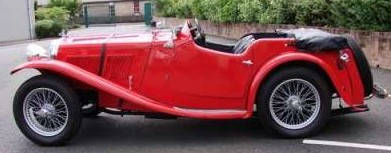
Another
good example of a 1930s Wolseley Hornet
An Outstanding Introduction to Theosophy
By a student of Katherine Tingley
Elementary Theosophy Who is the Man? Body and Soul
Body, Soul and Spirit Reincarnation Karma
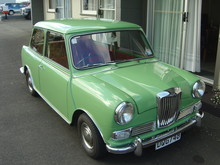
1960s
Riley Elf
Outwardly
the same as the Wolseley Hornet except for the badge & grill
A
bit more expensive
What Theosophy Is From the Absolute to Man
The Formation of a Solar System The Evolution of Life
The Constitution of Man After Death Reincarnation
The Purpose of Life The Planetary Chains
The Result of Theosophical Study
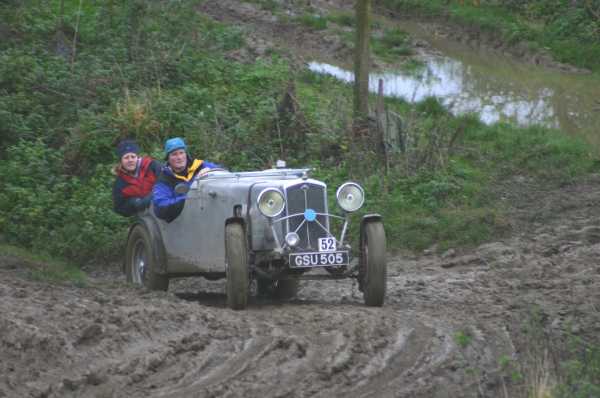
1930’s
Wolseley Hornet on a hill climb trial
An Outline of Theosophy
Charles Webster Leadbeater
Theosophy - What it is How is it Known? The Method of Observation
General Principles The Three Great Truths The Deity
Advantage Gained from this
Knowledge The Divine Scheme
The Constitution of Man The True Man Reincarnation
The Wider Outlook Death Man’s Past and Future
Cause and Effect What Theosophy does for us
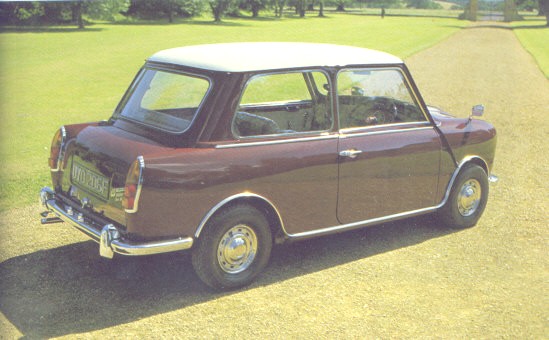
Side
and rear view of a 1960s Wolseley Hornet
Try these if you are looking
for a local
Theosophy Group or Centre
UK Listing of Theosophical Groups
Please tell us about your UK Theosophy Group

1960s
Wolseley Hornet promotional leaflet
___________________
into categories and presented according to relevance of
website.
Web Directory
- Add Link - Submit Article - Online Store - Forum
______________________
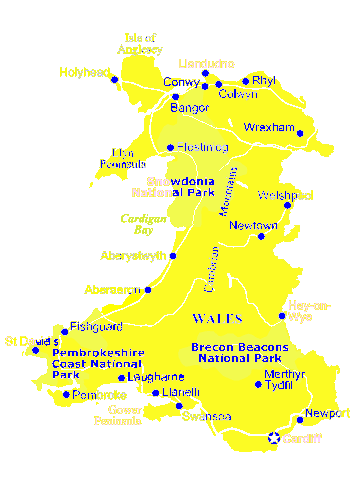
General pages about Wales, Welsh History
and The History of Theosophy in Wales
Wales is a
Principality within the United Kingdom and has an eastern
border with England. The
land area is just over 8,000 square miles.
Snowdon in North Wales is
the highest mountain at 3,650 feet.
The coastline is
almost 750 miles long. The population of Wales
as at the 2001 census is 2,946,200.
________________
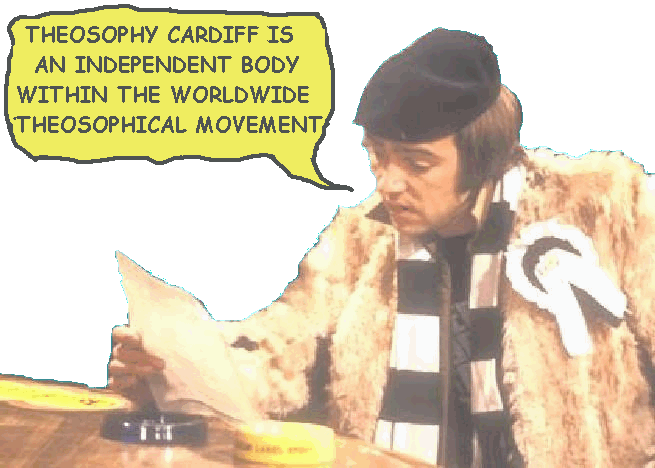
Bangor Conwy
& Swansea Lodges are members
of the Welsh
Regional Association (Formed 1993).
Theosophy Cardiff separated from the
Welsh Regional
Association in March 2008 and became an independent
body within the Theosophical Movement in March 2010
High
Drama & Worldwide Confusion
as Theosophy
Cardiff Separates from the
Welsh
Regional Association (formed 1993)
Theosophy Cardiff cancels its Affiliation
to the Adyar Based Theosophical Society
Cardiff, Wales,
UK, CF24 – 1DL
